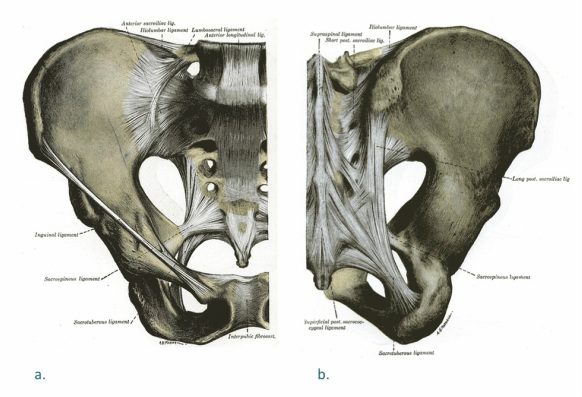Back Pain & Pregnancy
Sometimes pregnancy can be a bit of a pain in the back…
It is estimated that 50-80% of women experience hip, groin, or low back pain during pregnancy. Most commonly, back pain begins between the 5th and 7th month, although it can start as early as 4-16 weeks. One third of women report that pain is a significant concern.
Some of the changes that occur throughout pregnancy that impact back pain include:
Postural changes and increased curve of the low back to accommodate a growing belly. There is a shift in your centre of gravity.
⇓
Changes in hormone levels (such as relaxin) which causes increased laxity and flexibility of ligaments supporting the pelvis.
⇓
To compensate for this laxity, the muscles supporting pelvis will reflexively tighten, causing stiffness and pain.
⇓
Weakening of the muscles in the deep core and pelvic floor further contribute to instability and pain.
Anatomy of the Pelvis
The pelvis is made up of the sacrum (the upside-down triangle-shaped bone), two iliac bones, two isheal bones (your sit bones), and the pubic bones. Together, the sacrum and the ilium make up the SI (sacroilliac) joints. The pubic bones connect in the front to the form the pubic symphysis joint. The inner circle of the pelvis is the birth canal, which is the space that the baby must travel through during the birthing process.
How Your Pelvis Changes During Pregnancy
As you progress through pregnancy, the ligaments of the pelvis become very flexible to allow the birth canal to widen. This is a good thing because it allows the baby to pass through! However, if you don’t have perfect muscle tone and balance to compensate for these relaxing ligaments and increased movement, you are at higher risk of developing instability before and after the baby is born. The joints of the pelvis are more likely to become misaligned, move in ways that aggravates certain tissues, and develop compensating restrictions, all of which can cause inflammation and pain.
To compensate for increased laxity of the pelvis, the muscles responsible for stabilizing these joints tighten (or may even spasm) to create support. For example, on of the hip flexors (the iliopsoas) and the gluteal muscles are often involved. There is usually an imbalance in the tightness of these muscles which further contributes to pain and results in a sensation of stiffness. Some structures are too tight, other are too loose. It’s just like Goldilocks and the three bears. We want everything to be just right and working together in functional balance for a pain-free and fun pregnancy.
What Can You DO About Back Pain During Pregnancy?
Here are some of the general tips that you should consider to achieve that “Goldilock” status:
- Move your body!! Exercise builds better muscle tone, which will support those lax ligaments. Staying active is the best way to avoid back pain during pregnancy.
- Don’t sit too long. Being sedentary for extended periods of time can make things relax too much and you will really feel it when you go to get up again.
- Prioritize sleep. Everything feels better after a good night’s rest.
- Don’t sway! I know it is easy to give into to the preggo waddle, but check in with your posture and stand tall! Engage your core whenever you think about it.
- Eat well. This will help you in two ways: (1) avoid excess weight gain and (2) reduce inflammation.
- Get adjusted. Chiropractic care helps joint positioning, movement, and communication.
- Go for a massage. Because who doesn’t need another reason to go for a massage?
If you are not able to keep that back pain at bay on your own, seek help! We have a team of pregnancy-trained professionals available to give you individual guidance and care. Don’t hesitate to give the team at AltaVie a call, whether you are in pain now or wanted to set yourself up for success!



